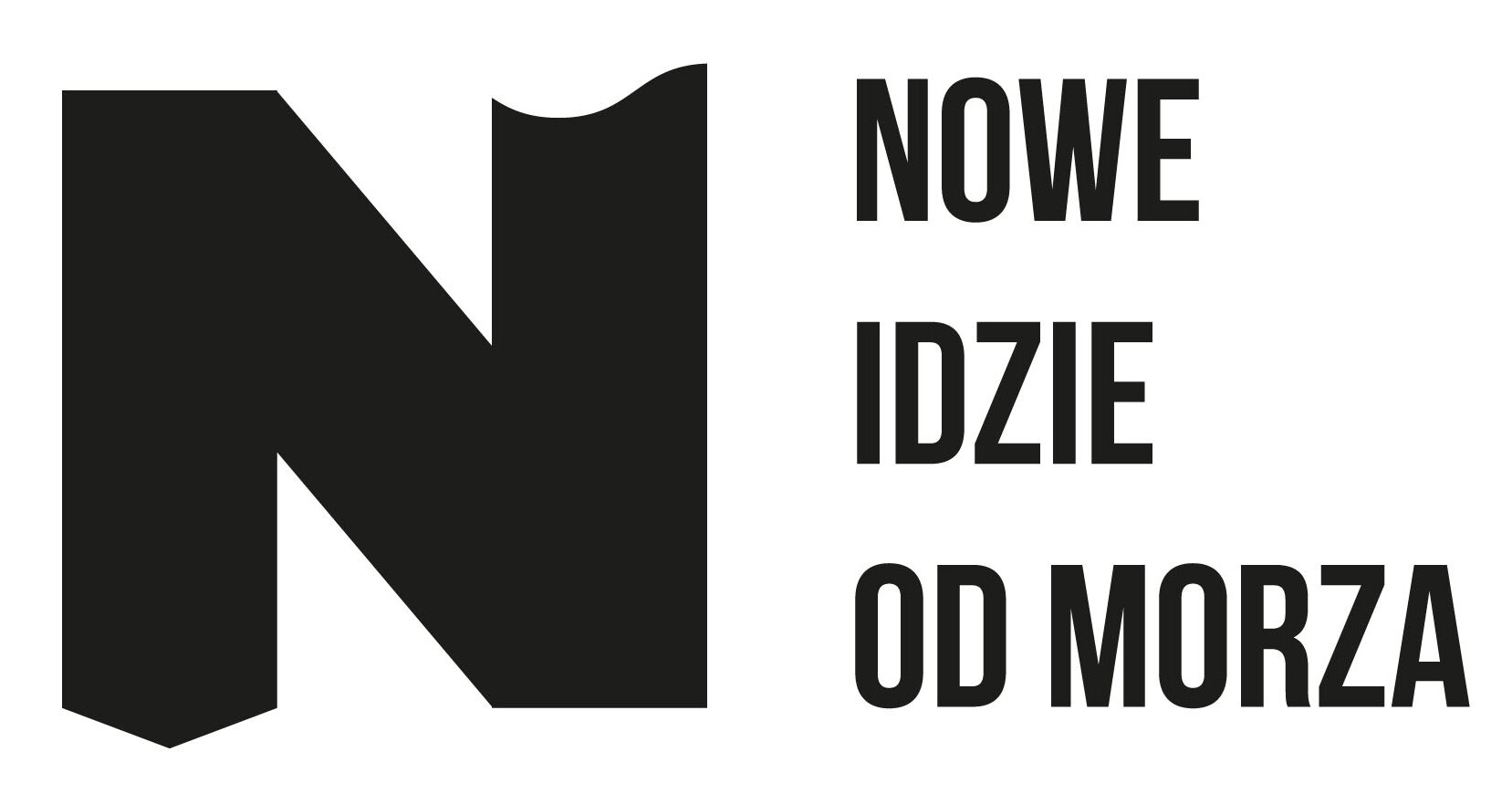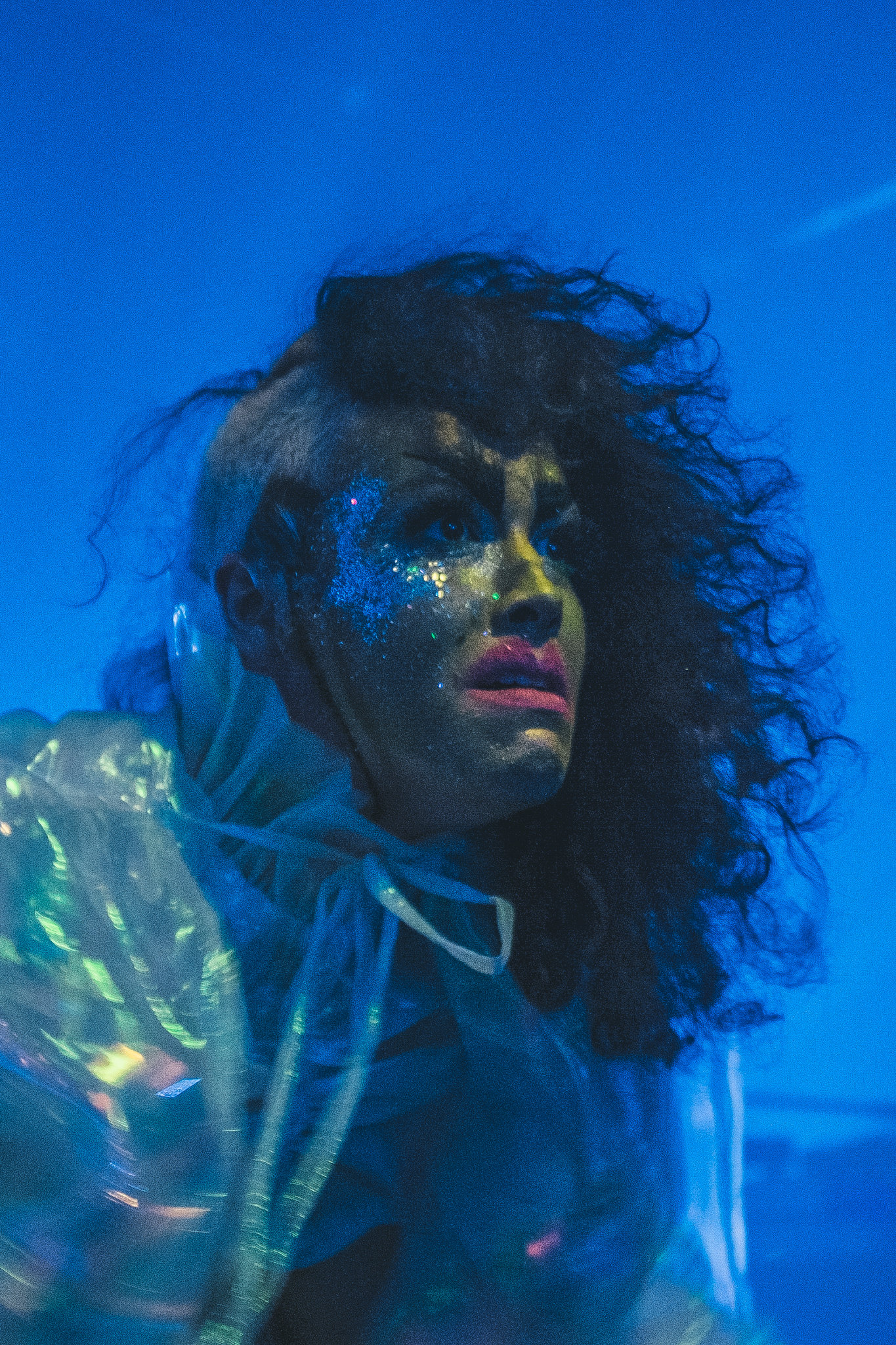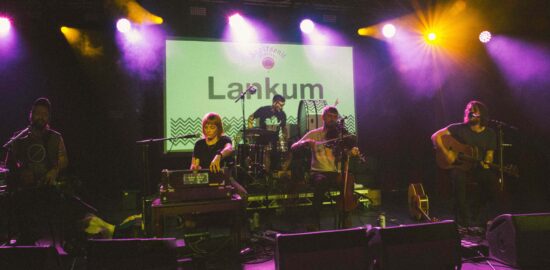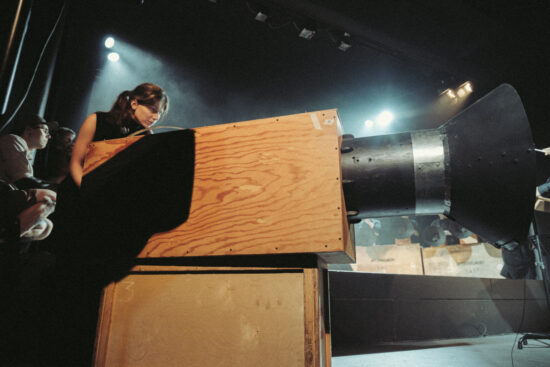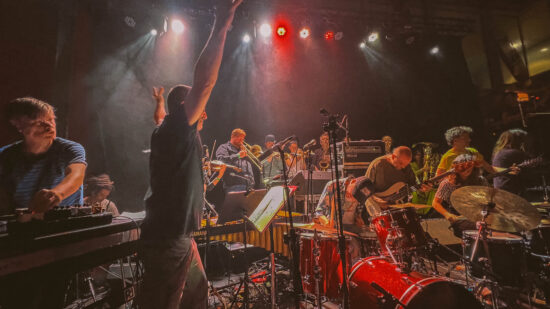The Krakow event proves yet again that festivals cannot be detached from reality. However, this year’s leitmotiv and the activities it inspired, have shown that more clearly than any of the previous editions.
Text and photos: Jakub Knera
Translation: Aleksandra Szkudłapska
Full festival gallery on FLICKR
When Duke Utauwa is playing in the dark spaces of Kuchnia and making the crowd go wild, Mczo Morfan, dressed in a denim jacket, is standing by. Against the backdrop of white tiles and glass walls he may look low-key, just an ordinary spectator, but in fact he is like a tiger getting ready to pounce on the stage – in this intimate and most interesting space of Hotel Forum the artists perform on the level of the audience. Minutes later, when more people join the crowd, the frenetic singeli accelerates, Mczo runs up to his colleague, who is standing behind the table with his laptop, and starts rapping to the microphone at an incredible speed. One may write a lot about singeli, but the true energy of that music can only be revealed during a live performance. The fast, dance-inducing tempo has something joyful about it, different from the more dark gqom or techno. It is not only pure fun, it is also wild, with its screamed lyrics, reactions to reality and socially engaged music. Last but not least, it attracts a big community – during the last year’s edition of Unsound, in the same venue, the crowd was mesmerised by the duo Bamba Pana and Makaveli, whereas Jay Mitta performed the day before.
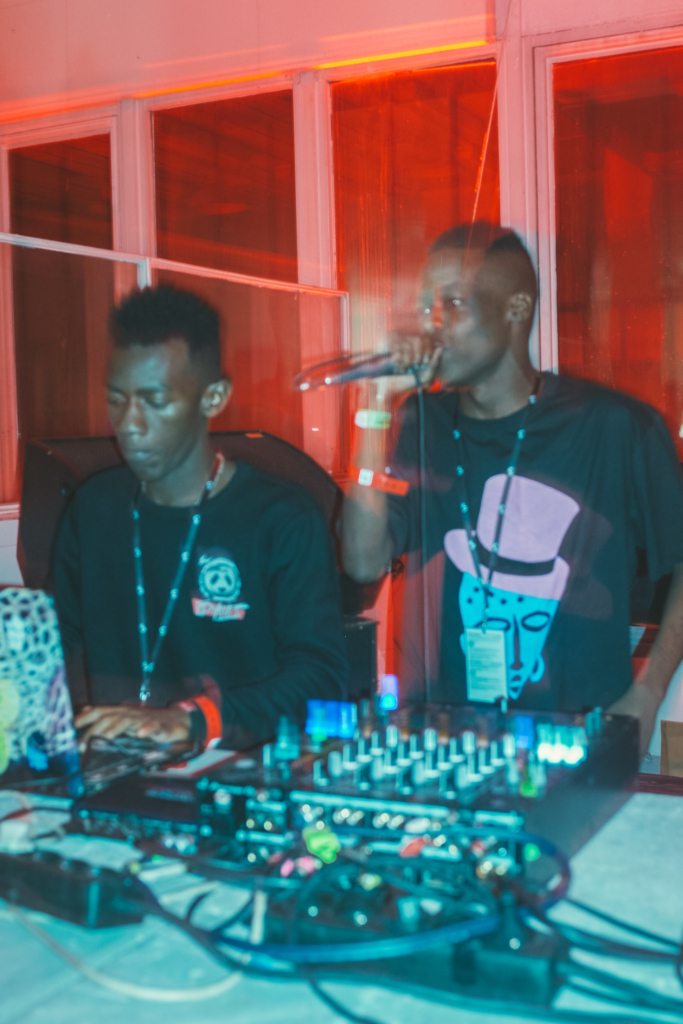
Mczo & Duke 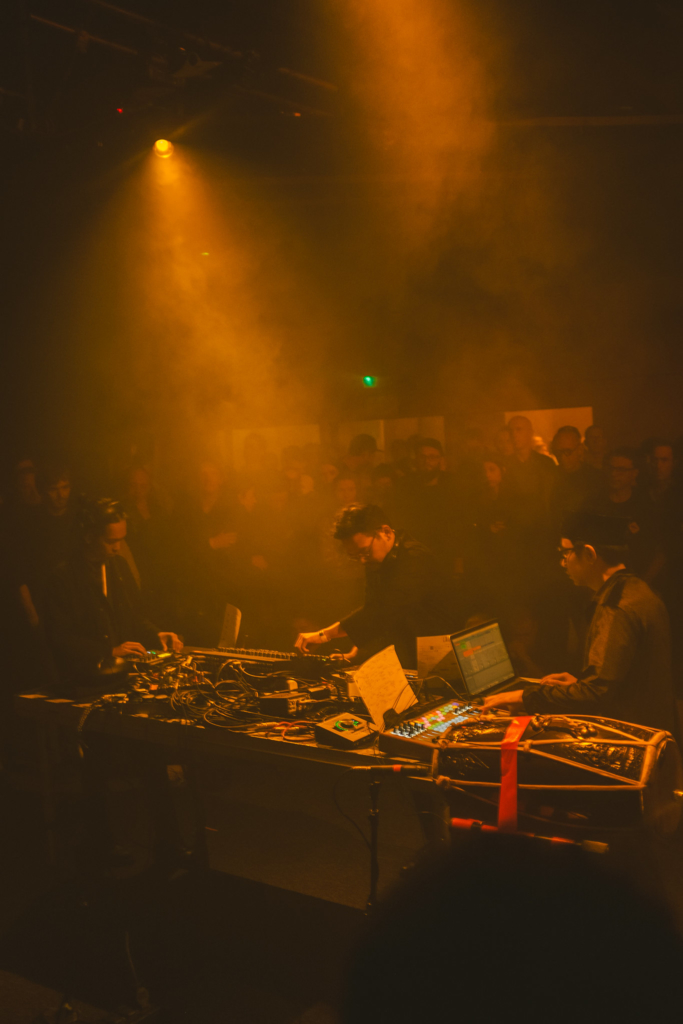
Uwalmassa
I also remember a moment from before another concert: Angela Carneosso aka Laura Diaz’s face emerges from the darkness between the catering area and the entrance to Chandelier Room. She rushes through the darkened hall of the brutalist building, towards the Ball Room stage, with shimmering, colour-reflecting make-up that makes her face look like a mask. Her band, Teto Preto, will play at 1 AM – they sometimes veer towards disco with a touch of samba, but luckily these moments are few and far between. They are at their best when the evocative beats induce a rave party – Carneosso, dressed in a costume revealing her breasts and vagina, writhes as if she was possessed, sings and screams to the microphone. Apart from the three musicians, she is accompanied by a half-naked dancer, Loic Koutana, whose provocative and outrageous gestures bring the show towards the audience. This is also a manifesto, a reaction to reality. While Mczo and Duke (who originate from the suburbs of Dar es Salaam) just like the whole singeli scene, emanate energy and fierceness, similar to punk, which provided a platform to scream one’s thoughts through music (there is only a laptop on the table and they often create their music with software such as Virtual DJ); the São Paulo-based Teto Preto revives the Brazilian tradition of 1960’s Tropicália. Obviously, not in a musical sense: their concerts and performances are a means of rebellion, under the guise of hedonistic fun they demand equality for the LGBT+ community and condemn the politics of the Brazilian president. And they do it bluntly: when their leader (the co-founder of the Mamba Negra collective of queer activists) yells “Fuck Bolsonaro” at the end of the concert, no one will have any doubts whether music is an abstract phenomenon, detached from reality. Another moment when sound took control of the space was the concert of the Indonesian duo Gaber Modus Operandi. They combine furious hardcore with elements of Indonesian ritual music and pop, and complement it with bright-coloured animations, while Ican Harem dances, raps and screams to DJ Kasimyna’s music. The sonic manifesto captivated the crowd, leaving no one indifferent.
Solidarity with diversity
Unsound has favoured such manifestations for several years now, so this diverse conglomerate was no surprise. The Krakow festival is far from post-colonial: there are no showcases, no experimental scenes featuring music from outside the Western culture, everybody is equal: bands from New York, London, Shanghai and Kampala play alongside each other and the featured artists may be heterosexual, homosexual, bisexual or transgender. The festival does not follow any trends – it creates them. This year’s leitmotiv, however, gave it a more profound meaning, especially after the incidents that happened in Białystok during the Equality March in July. By inviting those particular artists, the creators of Unsound decided to remind us about the role of the club scene and its tradition of social activism – not only with the concerts, but also during the most comprehensive discussion programme to date, as well as in simple gestures caring for the environment: from donations for the Earth (for planting trees), encouraging the use of reusable water bottles (I would recommend non-disposable cups given out in exchange for a small deposit), to the meme depicting the leitmotiv, created by Bolesław Chromry. Its potential finally worked outside the internet, helping to update the slightly hackneyed notion of “solidarity”.
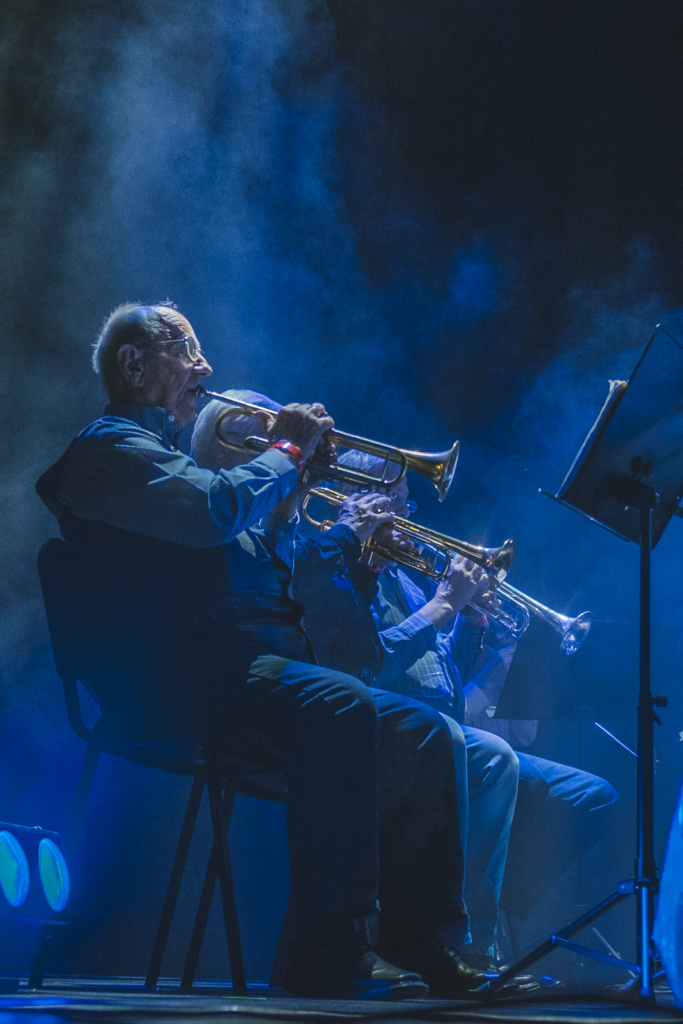
Mazovia Wind Orchestra 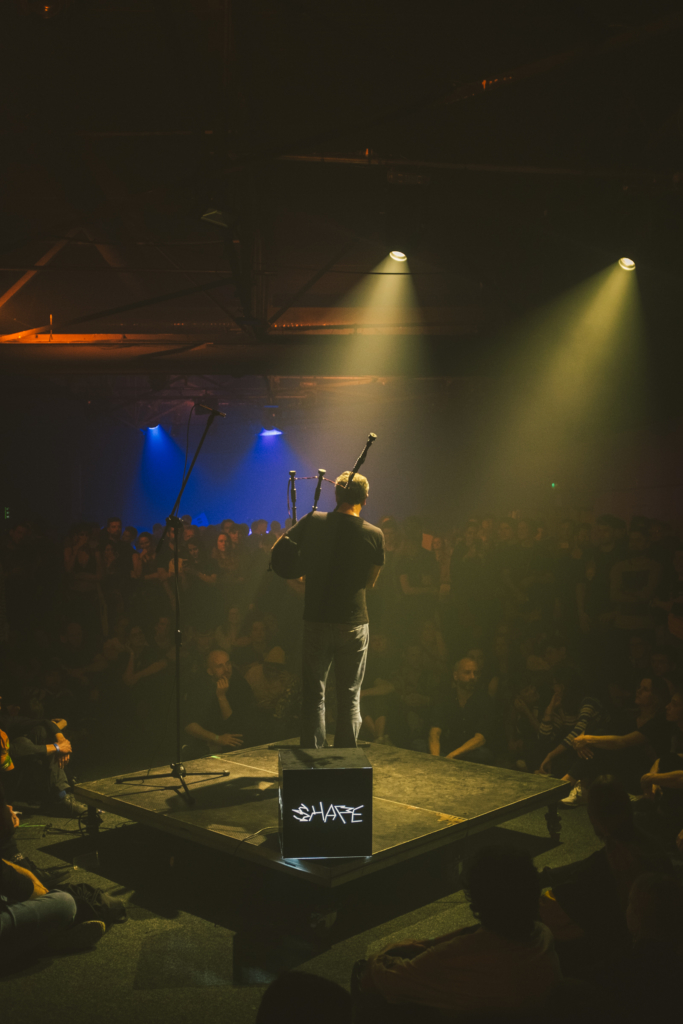
Erwan Keravec 
The Necks
An intergenerational project where Dominik Strycharski’s band joined forces with the Mazovia Wind Orchestra was a great rendition of the main theme. Even though the concert was good in its own right, it should have been preceded by a screening of Jaśmina Wójcik’s film Symfonia Fabryki Ursus, (Ursus Factory Symphony), which inspired the project (unfortunately, the screening was scheduled for the next day; a video with excerpts from the film could have been an alternative solution). The cheeky sound of the orchestra, reminiscent of weddings and fairs was beautifully interlaced with concise motifs played by Paweł Szpura, Wojtek Jachna, Barbara Drążkowska and Zbyszek Kozera. It presented a panorama of eras and styles: from plaintive factory melodies to improvised jazz parts and swelling quasi pop-rock forms. A moving concert and one of the most intense events of the festival; a meaningful musical tale of Poland’s political transformation, using the example of one of the country’s most famous factory. Perfectly fitting for the 30th anniversary of the 1989 elections.
This juxtaposition of personalities, contexts and traditions is the most interesting aspect of Unsound – and there were many moments that manifested the complexity of the world. Some of the most interesting concerts took place literally in the very centre of attention: in the middle of the audience. In HHY & The Kampala Unit, Jonathan Uliel Saldanha together with trumpeter Florence Lugemwa created a soundscape submerged in reverbs. However, it was the Ugandan drummer Omutaba who had more to say, playing percussion instruments at insanely fast tempos, drawing the audience’s undivided attention. Uwalmassa presented a combination of electronics with kendang, an instrument used in gamelan ensembles, whereas Erwan Keravec, who played the bagpipe at 1 AM, created an engrossing and hypnotising composition, attracting many party-goers (who dominated the festival audience throughout the week). This local colour from all over the world is something completely natural here: it is not marginal, it is an integral part of the programme. More often than not, these events were in fact more interesting than the more hyped-up ones, such as The Caretaker’s performance – it seems that the artist only plays at Unsound because he gets invited, and not because he has anything interesting to say, concert-wise (he did better when he created a sound installation for Ivan Seal’s exhibition); the awful collaboration of Eli Keszler (he should have played a solo gig!) with Nate Boyce, full of bland, overstated prog-rock solos of the latter artist; or the dull and pointless Lifetime by Klein, showed in ICE.
Full festival gallery on FLICKR
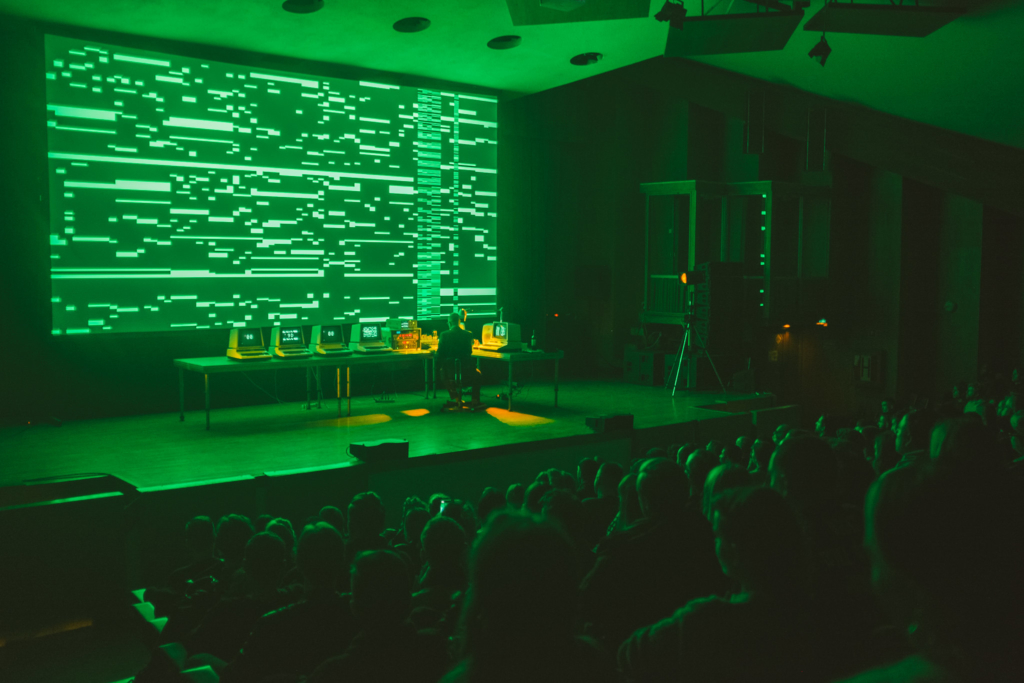
Robert Henke CBM 8032 AV
Solidarity without borders
The line between the Western and non-Western approach was erased during the opening concert. The Iran-based Sote featured Arash Bolouri on santour and Pouya Damadi on tar: however, their music should by no means be regarded as “a combination of traditional acoustic instruments with futuristic electronics” or “a modern take on traditional music”. Ebtekar’s approach is exceptional, as the artist treats his tools equally, be it traditional Iranian instruments, sound synthesis or electronic instrunents. On Parallel Persia it is often difficult to distinguish live sounds from those created on the computer, whereas the concert showcased the trio’s methodology. The instruments were adding layers to Abtekar’s electronics, but the composer also distorted their sound with filters, thus creating scale variations and sometimes very dehumanised sound. These two parallel worlds existed in perfect harmony, attesting to the artist’s greatness. Also João Pais Filipe from Portugal played a good concert with Burnt Friedman – it was entertaining and motoric when the percussion instruments developed over the German’s Korg collages, sometimes strongly resembling his contributions to Flanger. However, I must admit that Filipe plays terrific solo gigs and in the future he should come to Krakow alone.
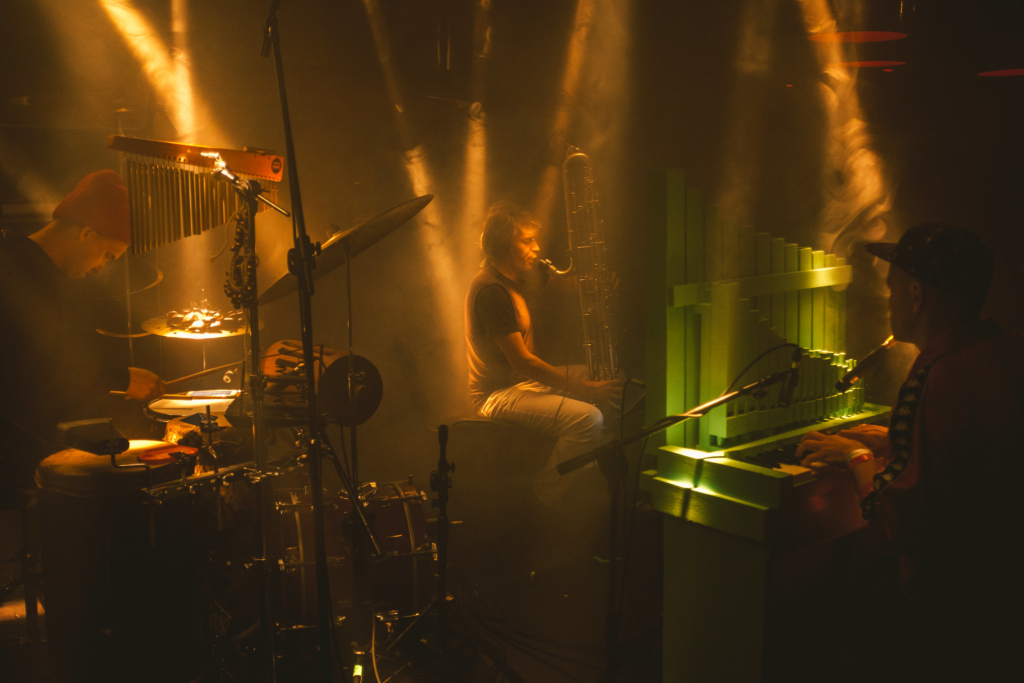
Polonka
Wacław Zimpel’s and James Holden’s concert was an exception from the typical festival rule when an artist from abroad is the “star” of the project. Here it was Zimpel who was the spiritus movens. Initially he was supposed to collaborate with Sam Shackleton, who unfortunately could not make it to Krakow. The colleague who stood in for him had already worked with the clarinet player in The Animal Spirits. The author of The Inheritors spun melodies and improvisations on a modular synthesiser, albeit somewhat timidly, giving way to Zimpel, who was the stronger performer, both while wailing on the wind instrument and while sitting at the keyboards. Impetuous and energetic, he proved that he was in his element. That being said, I’ll be waiting for his concert with Shackleton nonetheless.
Two trios created an intense musical experience and added colour to Hotel Forum’s impromptu club spaces. Firstly, Lotto – premier league musicians who reduce rhythms while creating a dense texture of trancy, pulsating sound. I saw them three times this year and even though each show was different, they were always captivating, powerful and full of life and their concert at Unsound was precisely that – they are second to none. Next came Polonka, the most singular band of the festival; the trio’s most recent and somewhat overlooked album is fantastic and was a great starting point for musical variations. Jan Młynarski’s drums were raw, rhythmical and very primal. Piotr Zabrodzki played the positive organ in a feisty manner, but also created cheeky, original, catchy tunes. Finally, Michał Górczyński pulsating bass tunes added a very expressive element to this music. The whole concert, bathed in red lights of the Secret Lodge, decorated with carpets and round sofas, was an oneiric journey which brought to mind soundtracks for old Polish cartoons, or an expedition to Africa.
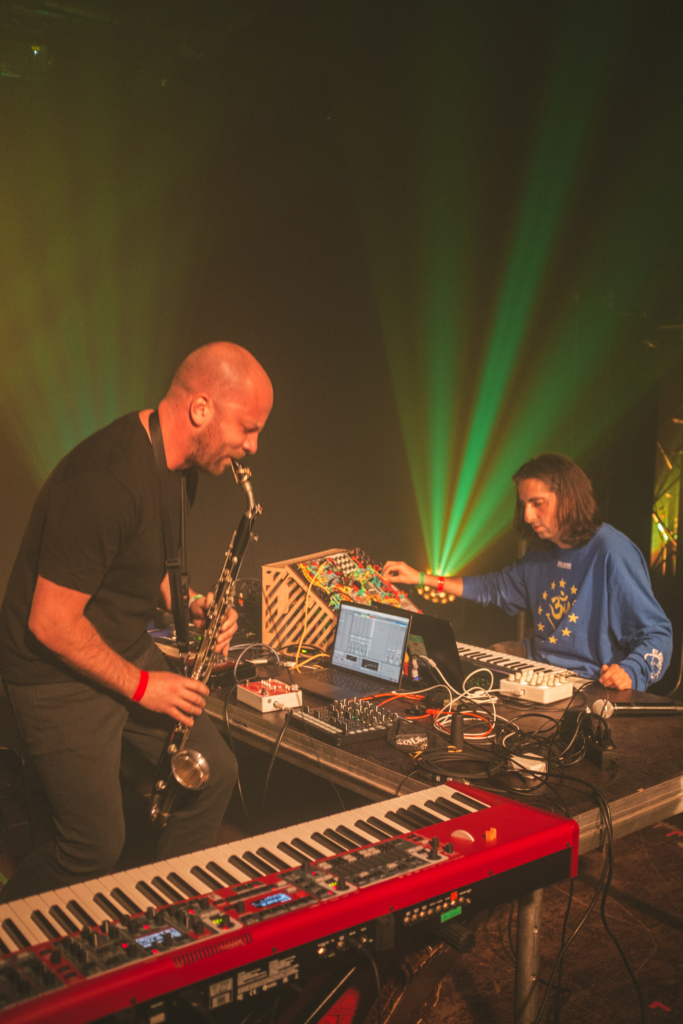
Wacław Zimpel & James Holden 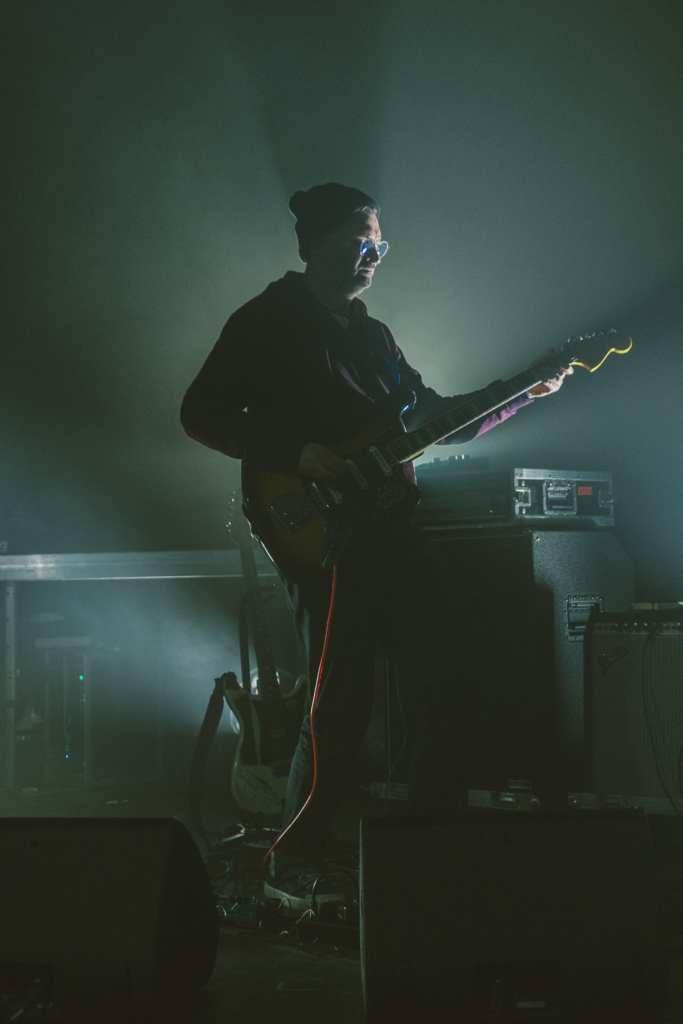
Lotto
Solidarity with gender balance
Many great shows were played by women, which makes me happy, considering that festival line-ups are usually dominated by men. MC Yallah, accompanied by Debmaster, impressed the audience with great flow, especially that her album Kubali, released this year, really showcased her charisma and brilliant rap.
Lyra Pamuk, who opened Sunn O)))’s show, presented a voice range which, submerged in delicate electronics, turned out to be more engaging than the evening’s headliner. Moments later, Katarzyna Smoluk-Moczydłowska, Agata Harz (Księżyc) and Barbara Wilińska gave colour and life to the otherwise dull “Roly Porter’s and MFO’s audiovisual show”, unfortunately only for a moment. 33EMYBW’s set was a highlight of the programme in Kuchnia: the artist created an unconventional, ever-changing but also smooth and captivating vision of club music.
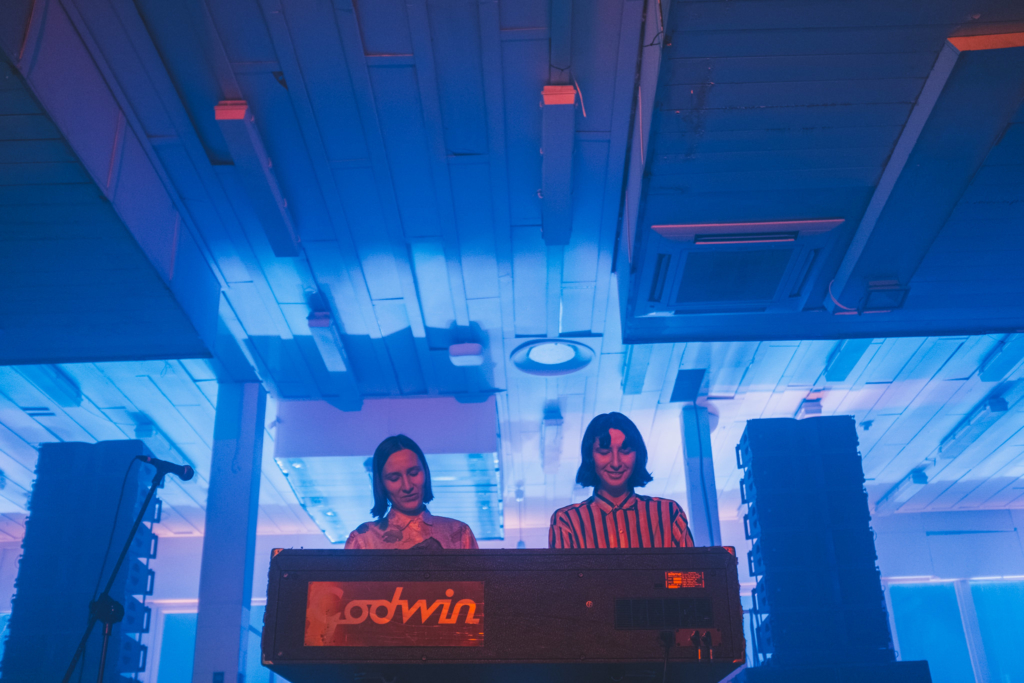
Mentos Gulgendo
Mentos Gulgendo, the new project of the Nowackie sisters, known from WIDT, turned out to be the dark horse of this edition. Their music, resonating in the tiled walls of Kuchnia, was minimalist, but also disquieting. They both played Goldwin electric piano, gradually unfolding a poignant musical suite. More and more people gathered in the audience, the space was filling with red light, but the real explosion happened when Antonina approached the microphone to conjure the spirits of that place with a voice that reached the ceiling: with indistinguishable words she conducted a musical ritual in the modernist building. Another event which brilliantly combined music with space was Chernobyl in the Telkom building, where the musicians played on a stage constructed in the middle of the hall. Hildur Guðnadóttir was not a leader here. The acoustic arrangement of the space was excellent, and the show resembled a site-specific sound installation rather than a traditional concert, especially that the compositions from the TV series have a more illustrative form and are not that entrancing on their own in a concert situation. The cellist did not play one note on her instrument, and used her voice instead, sounding beautifully in the industrial space. Chris Watson and Sam Slater carefully built a sound structure around her, and the halogen lights were synchronised with the multi-channel sound system (kudos to Francesco Donadello), which built a dark and hypnotising atmosphere, accentuated by intriguing lighting (kudos to Therese Baumgartner).
Solidarity with activism
Robert Henke was given an adequate venue – he played in the assembly hall of the University School of Physical Education. CBM 8032 AV turned out to be an intriguing display of archaic gear, used for creating old-fashioned music which managed to stand its ground – a lot depended on the context in which it was composed. The rhythmic acrobatics and dense noise forms arranged in an engrossing narrative structure made for a memorable, intense concert, with four computers and visualisations of green lines of code intensifying the experience. The moment when the artist types code on the old machines’ keyboards to translate them into sound, was truly unforgettable.
Full festival gallery on FLICKR
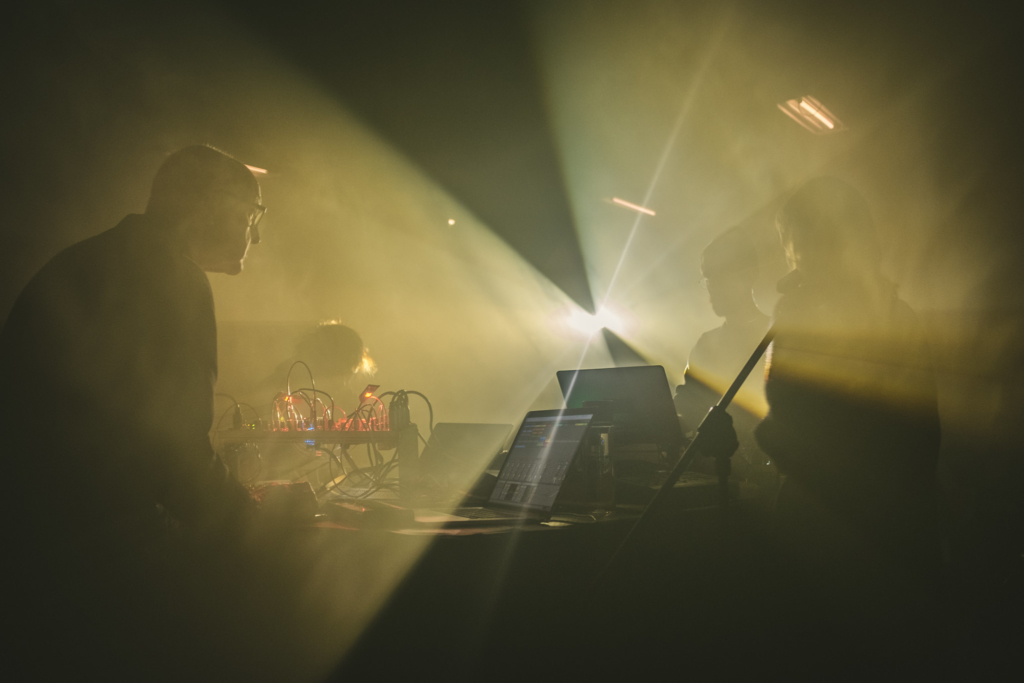
Hildur Guðnadóttir, Chris Watson & Sam Slater play Chernobyl
I have been coming to the Unsound festival since 2008 (although not regularly; I have covered the following editions: 2010, 2011, 2013, 2014, 2015, 2018). I often have my doubts whether some performers would make the line-up if it were not for their collaborations (it seems that Keravec, whose show was indeed quite interesting and who also played during the Warsaw Autumn, was only invited because of his collaboration with Shape); or whether instead of inviting the same famous musicians over and over again, the festival should rather replace them with less hyped-up ones (Holly Herndon: long-winded and overly excited about herself should definitely be replaced with someone representing John Doran’s New Weird Britain). Still, there was no shortage of good shows. The curators are searching for new ways of experiencing live music: after churches and synagogues they explore other spaces in Krakow. Sometimes the sound manifestos came unexpectedly, like in the Wieliczka Salt Mine where bad acoustics ruined The Necks’ performance – the wide spectrum of musical details should be an immersive experience – whereas Felicia Atkinson’s show was low-energy and unconvincing. What I will remember from that evening, however, was the finale of Philip Sherburne’s DJ set, when after an hour or so of electronic music, the artist played Coltrane’s “Blue Train” in Raphael Rogiński’s rendition. The jazz star’s song played on prepared guitar is a political gesture – and so was featuring it as the final piece of that show: underground, for an audience engrossed in electronic music.
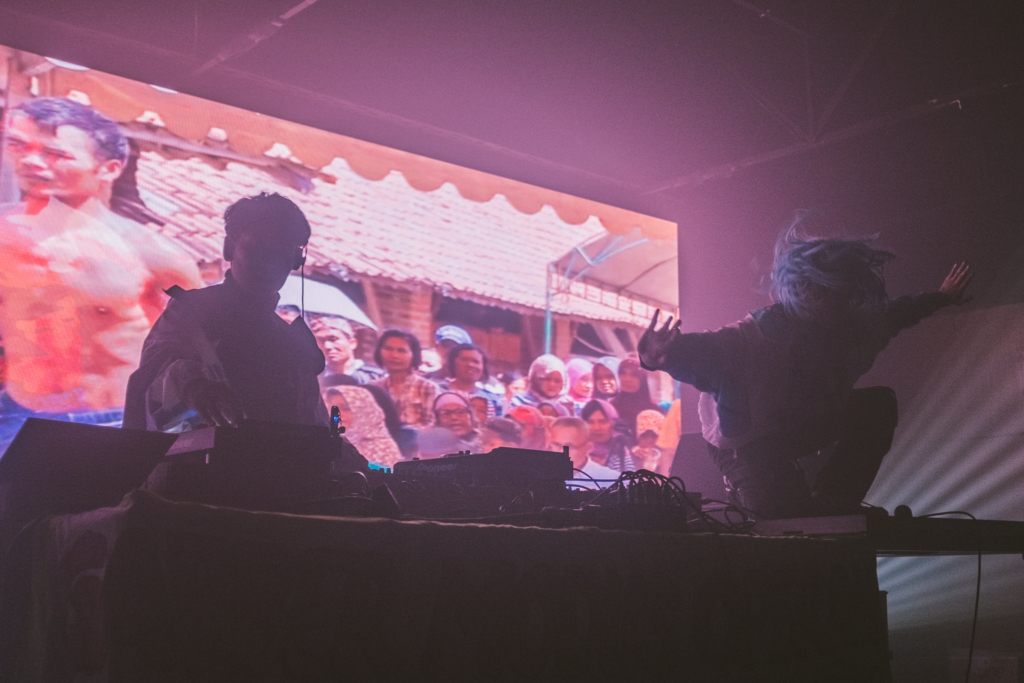
Gabber Modus Operandi 
Sote + Arash Bolouri & Pouya Damadi 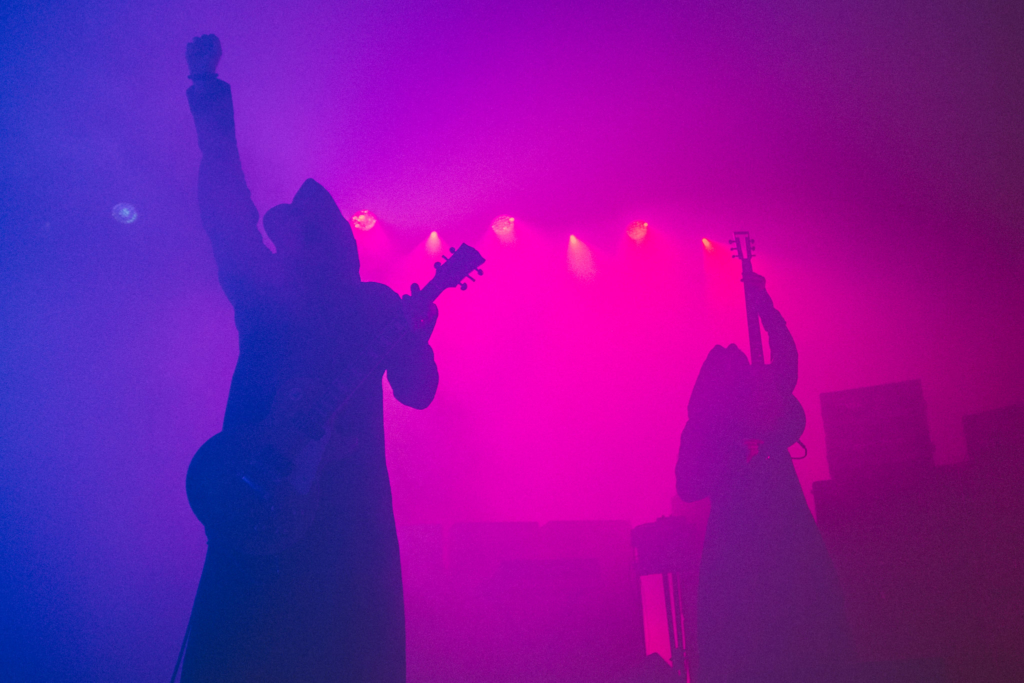
Sunn O))) 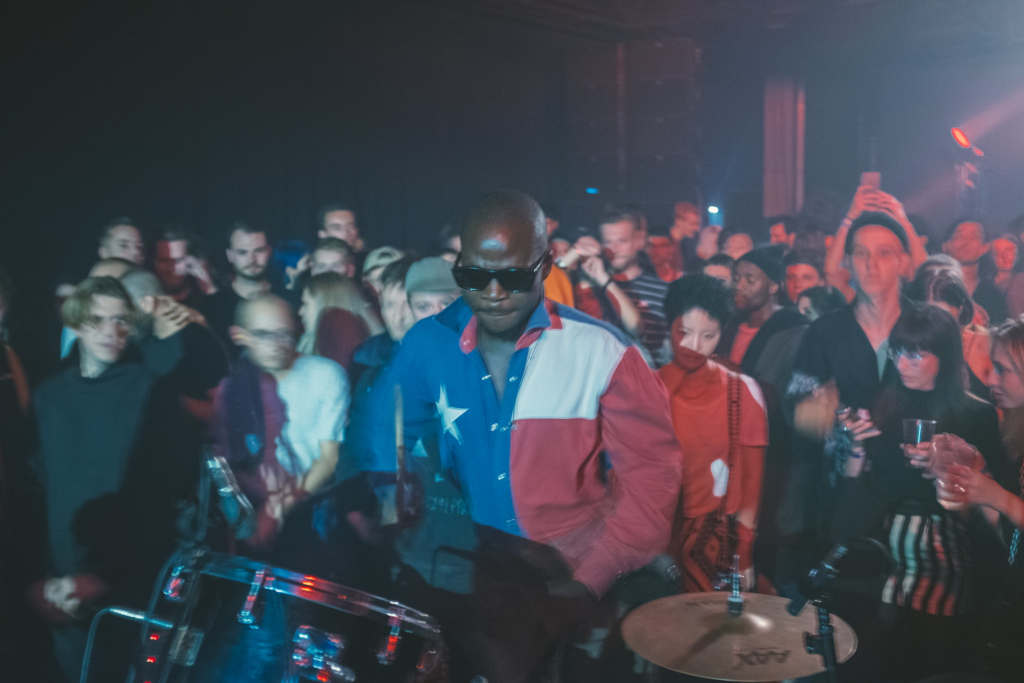
HHY & The Kampala Unit
